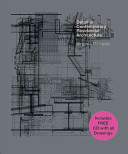The Topkap Scroll
Geometry And Ornament In Islamic Architecture

Overview
Since precious few architectural drawings and no theoretical treatises on architecture remain from the premodern Islamic world, the Timurid pattern scroll in the collection of the Topkapi Palace Museum Library is an exceedingly rich and valuable source of information. In the course of her in-depth analysis of this scroll dating from the late fifteenth or early sixteenth century, Gülru Necipoğlu throws new light on the conceptualization, recording, and transmission of architectural design in the Islamic world between the tenth and sixteenth centuries. Her text has particularly far-reaching implications for recent discussions on vision, subjectivity, and the semiotics of abstract representation. She also compares the Islamic understanding of geometry with that found in medieval Western art, making this book particularly valuable for all historians and critics of architecture. The scroll, with its 114 individual geometric patterns for wall surfaces and vaulting, is reproduced entirely in color in this elegant, large-format volume. An extensive catalogue includes illustrations showing the underlying geometries (in the form of incised “dead” drawings) from which the individual patterns are generated. An essay by Mohammad al-Asad discusses the geometry of the muqarnas and demonstrates by means of CAD drawings how one of the scroll’s patterns could be used co design a three-dimensional vault.


































